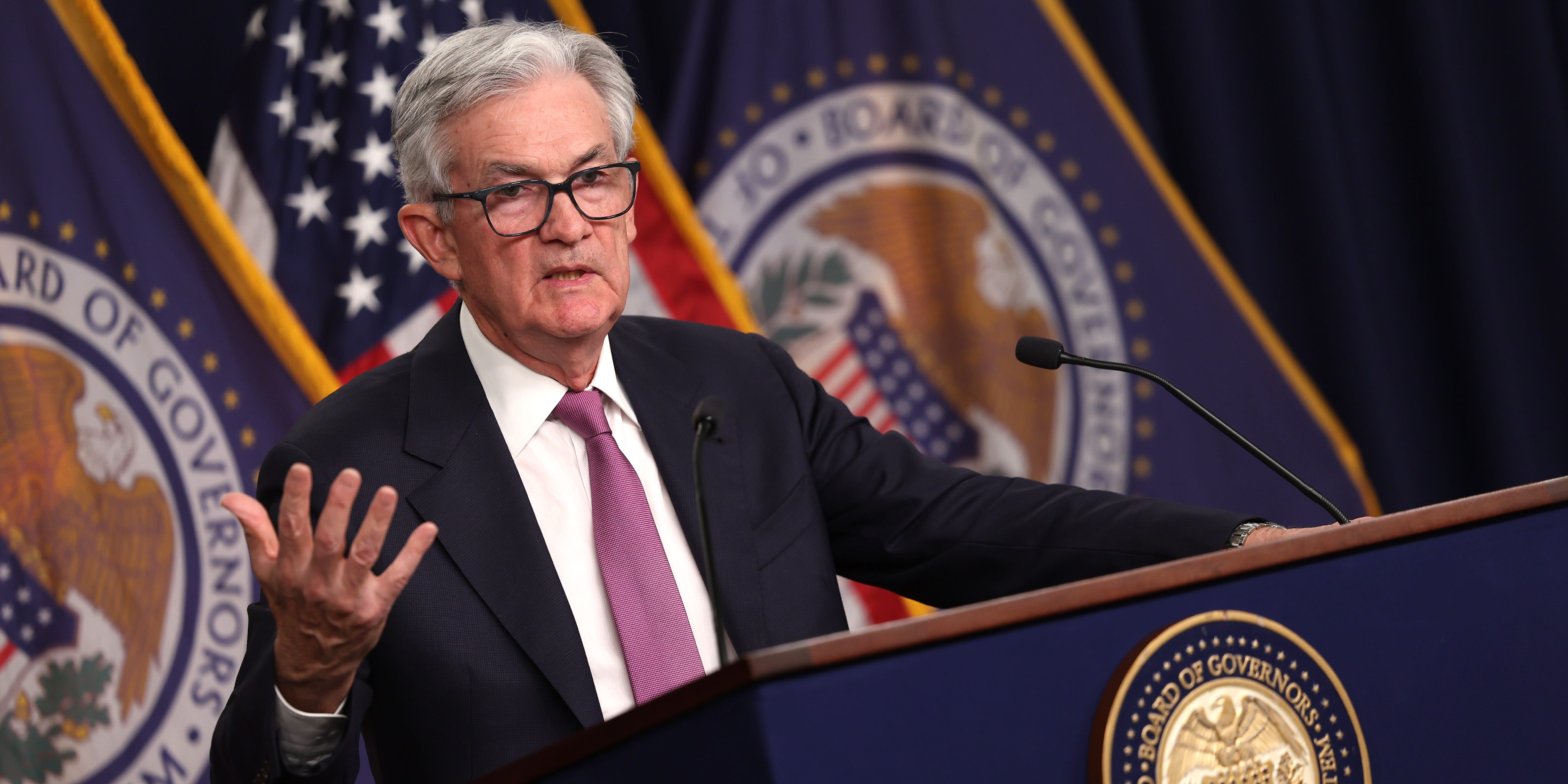The Fed looks set to raise interest rates for a 10th consecutive time at its May meeting this coming week. A signal of a pause in hikes or a dovish Chairman Powell could ignite a rally in markets. A portfolio manager said it may take a black swan event to prompt the Fed to cut rates this year. Loading Something is loading.
Thanks for signing up!
Access your favorite topics in a personalized feed while you’re on the go.
Ready for borrowing costs to go up again?
The 10th straight rate hike by the Federal Reserve is likely to take place next week as May trading gets underway, but speculation over when the central bank will start chopping down rates will be top of mind for markets.
While investors are looking for rate cuts this year, a portfolio manager told Insider it may take a black swan event to see such a move before 2024.
There’s an 85% probability that Fed Chairman Jerome Powell and his colleagues will raise the Fed funds rate by 25 basis points at its May 2-3 meeting. The key rate would then stand at 5%-5.25%. It hasn’t been above 5% since the housing boom in 2006.
Bond market pricing indicates the Fed – after pushing up rates at the quickest pace in decades – will pause this month until November when investors anticipate rate cuts to start, Emily Roland, co-chief investment strategist at John Hancock Investment Management, told Insider.
“We expect to see some acknowledgment or reacknowledgment that they want to potentially step back and see what the impact is of all the rate hikes that they’ve done so far,” she said about the Fed.
“They’re certainly not going to concur with the bond market or say they’re going to make cuts towards the back half of the year. That would basically be equivalent to admitting that you’ve already made a mistake and that you’re gonna have to backtrack on rates,” she said.
Inflation has been easing from its highest levels in 40 years but consumer price pressures are still well above the central bank’s 2% target.
Still, investors are looking for the Fed to signal it’s ready to watch if inflation can drift lower on its own, Chase Hinderstein, director at Wise Investor Group, a financial advisory team that’s part of Raymond James, told Insider.
“The market is getting impatient with the Fed going too far and is more concerned about the damage that it might do, as some elements of inflation are beyond the Fed’s control,” he said. “They’re looking for the willingness of the Fed to say, ‘we’ve gotten enough to a point where we can stop’,” he said.
Stock market rally incoming? Risk assets could rally if Powell or the Fed’s statement signals a pause in rate hikes after May. Powell sounding outright dovish would be a surprise that could provide another tailwind for the markets, Roland said, adding that caution is still warranted.
“I think we want to be mindful of chasing that rally,” she said, as markets are displaying few signs of bearishness among investors. Volatility is low with the VIX under 20, the S&P 500 is trading at a pricey 18 times forward earnings and bitcoin up nearly 80% this year, Roland said.
“We would be mindful of adding too much risk to portfolios in an environment where the macro picture is telling you something completely different than what the markets are telling you,” she said.
Yield curve inversion is warning that the US economy will enter an economic downturn in May, according to Bank of America. Markets are awaiting confirmation from the labor market, it said. The April jobs report is due on May 5, with expectations the unemployment rate will stick near 3.6%.
Markets could start seeing a Fed rate cut taking place sooner than the end of 2023 if the unemployment rate rises “meaningfully above” the Fed’s forecast of 4.5%, said Roland.
Fed officials in March indicated they see rate cuts starting in 2024.
While the short end of the bond market foresees rate cuts this year, Hinderstein said there are not enough economic reports on the 2023 calendar to sway the Fed to starting rate cuts this year.
“Short of black swan event – which I dearly do not want to see – I don’t see a normal runway where the Fed can get enough data by then to satisfy [policymakers] that they’ve achieved what they want and need to start cutting rates in order to support the economy,” Hinderstein said.
A surge in the unemployment rate to at least 7% or 8% or an explosion of a “true” banking crisis with financial contagion would be black swan events, he said.
